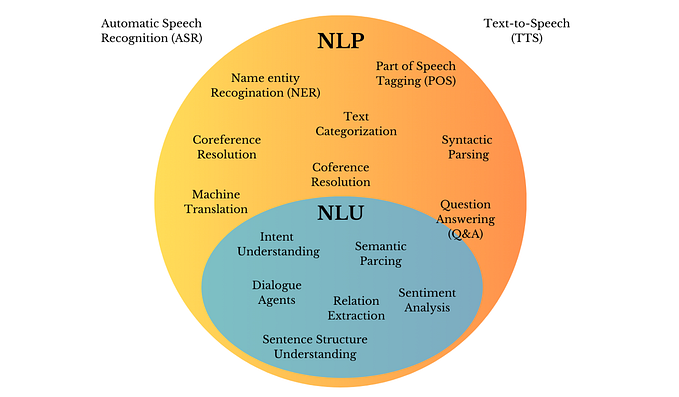How to Build an LLM from Scratch: A Comprehensive Guide
Building a large language model (LLM) from scratch is a challenging yet rewarding endeavor. LLMs like GPT-4 are powerful AI systems capable of understanding and generating human-like text. This blog explores the essential steps involved in constructing an LLM from scratch, covering everything from foundational concepts to deployment strategies. Whether you’re a curious enthusiast or an experienced AI developer, this guide will provide you with insights into the fascinating world of LLMs.

Understanding Large Language Models
Before diving into the building process, let’s clarify what LLMs are.
What Are LLMs?
LLMs are machine learning models trained on vast amounts of text data. They use transformer architectures, a neural network design introduced in the paper “Attention Is All You Need”. Transformers excel at capturing context and relationships within data, making them ideal for natural language tasks.
Core Components of an LLM
- Tokenizer: Splits text into smaller units like words or subwords.
- Embedding Layer: Converts tokens into dense vector representations.
- Transformer Blocks: Layers that use self-attention mechanisms to process and understand input sequences.
- Output Layer: Generates predictions, such as the next word in a sentence.
Step 1: Define the Use Case

Identify the purpose of your LLM. Different applications require different designs and datasets.
- General-Purpose LLM: Trained on diverse data for broad tasks (e.g., GPT, BERT).
- Domain-Specific LLM: Focused on specialized fields like legal, medical, or financial text.
- Task-Specific LLM: Designed for tasks such as summarization, translation, or sentiment analysis.
Step 2: Gather and Prepare Data

High-quality data is the backbone of any LLM.
Data Collection
- Sources: Open datasets (e.g., Common Crawl, Wikipedia), proprietary data, or domain-specific corpora.
- Quantity: A typical LLM requires hundreds of gigabytes to terabytes of text data.
Data Cleaning
- Remove duplicates, noise, and irrelevant content.
- Normalize text by converting it to lowercase, fixing encoding issues, etc.
Data Annotation
For supervised learning tasks, annotated datasets (e.g., labeled sentiment data) enhance performance.
Step 3: Build a Tokenizer
What is Tokenization?
Tokenization is the process of splitting text into smaller units, such as words, subwords, or characters.
Common Tokenization Methods
- Word Tokenization: Splits text by spaces.
- Subword Tokenization: Breaks rare words into subwords (e.g., “unbelievable” → “un”, “believable”).
- Character Tokenization: Uses individual characters as tokens.
Example Tool: Byte Pair Encoding (BPE) is widely used for subword tokenization. Libraries like Hugging Face’s Tokenizers make implementation easier.
Step 4: Architect the Model
The transformer architecture is the foundation of LLMs.
Key Components of a Transformer
- Self-Attention: Captures relationships between words regardless of their position in a sentence.
- Positional Encoding: Adds information about the order of words.
- Feedforward Layers: Process outputs from the attention mechanism.
Design Choices
- Depth: Number of transformer layers.
- Width: Size of hidden layers and embedding vectors.
- Attention Heads: Number of parallel attention mechanisms.
For large-scale models, consider using a prebuilt architecture like GPT, BERT, or T5 as a blueprint.
Step 5: Choose a Training Framework
Leverage machine learning frameworks to implement your model.
Popular Frameworks
- PyTorch: Great for custom implementations.
- TensorFlow: Offers robust tools for scalability.
- Hugging Face Transformers: Provides prebuilt models and training utilities.
Step 6: Train the Model
Training an LLM is resource-intensive and requires careful planning.
Pretraining vs. Fine-Tuning
- Pretraining: Train the model on large, unlabeled datasets for general language understanding.
- Fine-Tuning: Adapt the pretrained model to specific tasks using labeled data.
Compute Resources
- Hardware: Use GPUs or TPUs for faster training.
- Distributed Training: Split the workload across multiple devices or machines.
Training Steps
- Load Data: Feed batches of tokenized text into the model.
- Backpropagation: Adjust weights using loss functions like cross-entropy.
- Optimization: Use optimizers like AdamW to minimize loss.
Step 7: Evaluate the Model
Metrics
- Perplexity: Measures how well the model predicts sequences.
- BLEU/ROUGE: Evaluates text generation quality.
- Accuracy/F1 Score: Measures performance on classification tasks.
Test Dataset
Use unseen data to assess generalization capabilities.
Step 8: Optimize the Model
Large models often need optimization to improve efficiency.
Techniques
- Quantization: Reduce the precision of weights (e.g., float32 → int8).
- Pruning: Remove unnecessary connections.
- Distillation: Train a smaller model (student) using the outputs of the large model (teacher).
Step 9: Deploy the Model
An LLM’s value comes from its ability to serve real-world applications.
Serving Options
- REST APIs: Serve the model through a web interface.
- Edge Deployment: Deploy lightweight versions on devices.
- Cloud Services: Use platforms like AWS, Azure, or Google Cloud.
Scaling
Use containerization (e.g., Docker) and orchestration tools (e.g., Kubernetes) for scalability.
Step 10: Maintain and Update
Monitor the model’s performance and retrain it periodically with fresh data.
Best Practices
- Implement logging to track predictions and errors.
- Use feedback loops to incorporate user corrections.
Challenges and Considerations
- Cost: Training large models requires significant computational resources.
- Ethics: Ensure the model doesn’t propagate biases or generate harmful content.
- Regulations: Adhere to data privacy laws like GDPR.
Conclusion
Building an LLM from scratch is a monumental task that requires expertise, resources, and dedication. By following this guide, you’ll gain a better understanding of the steps involved and the challenges to expect. Whether you’re building a general-purpose LLM or a task-specific model, the key to success lies in meticulous planning, robust implementation, and continuous learning.
Join the Conversation
- Clap 👏: If this guide inspired you!
- Comment 💬: Share your experiences or ask questions.
- Follow 🚀: Stay updated on the latest trends in AI and machine learning.







